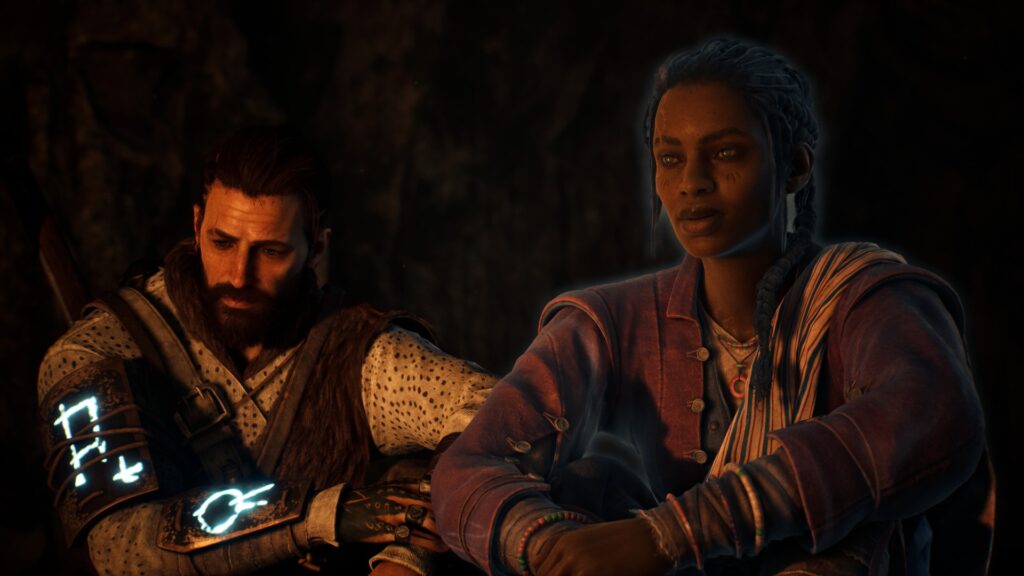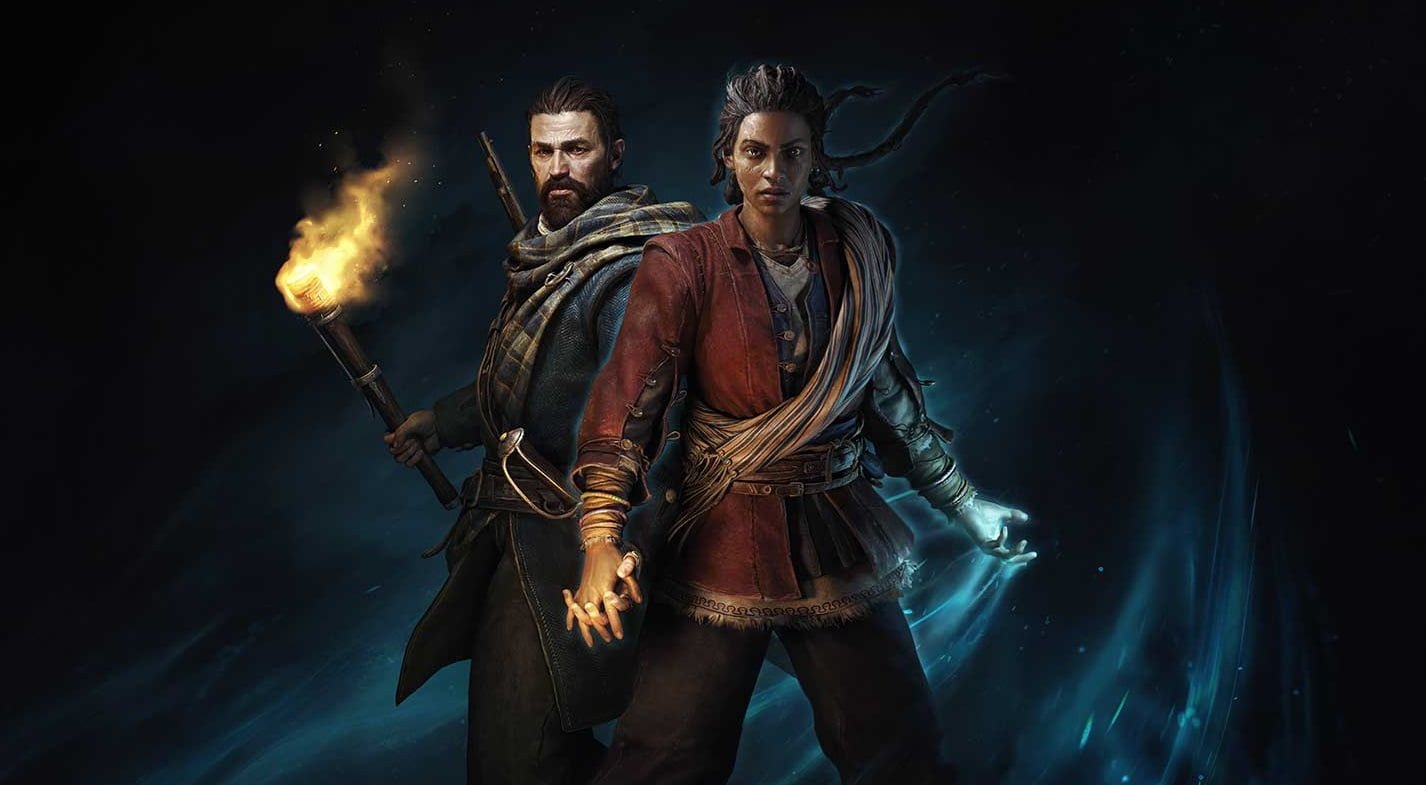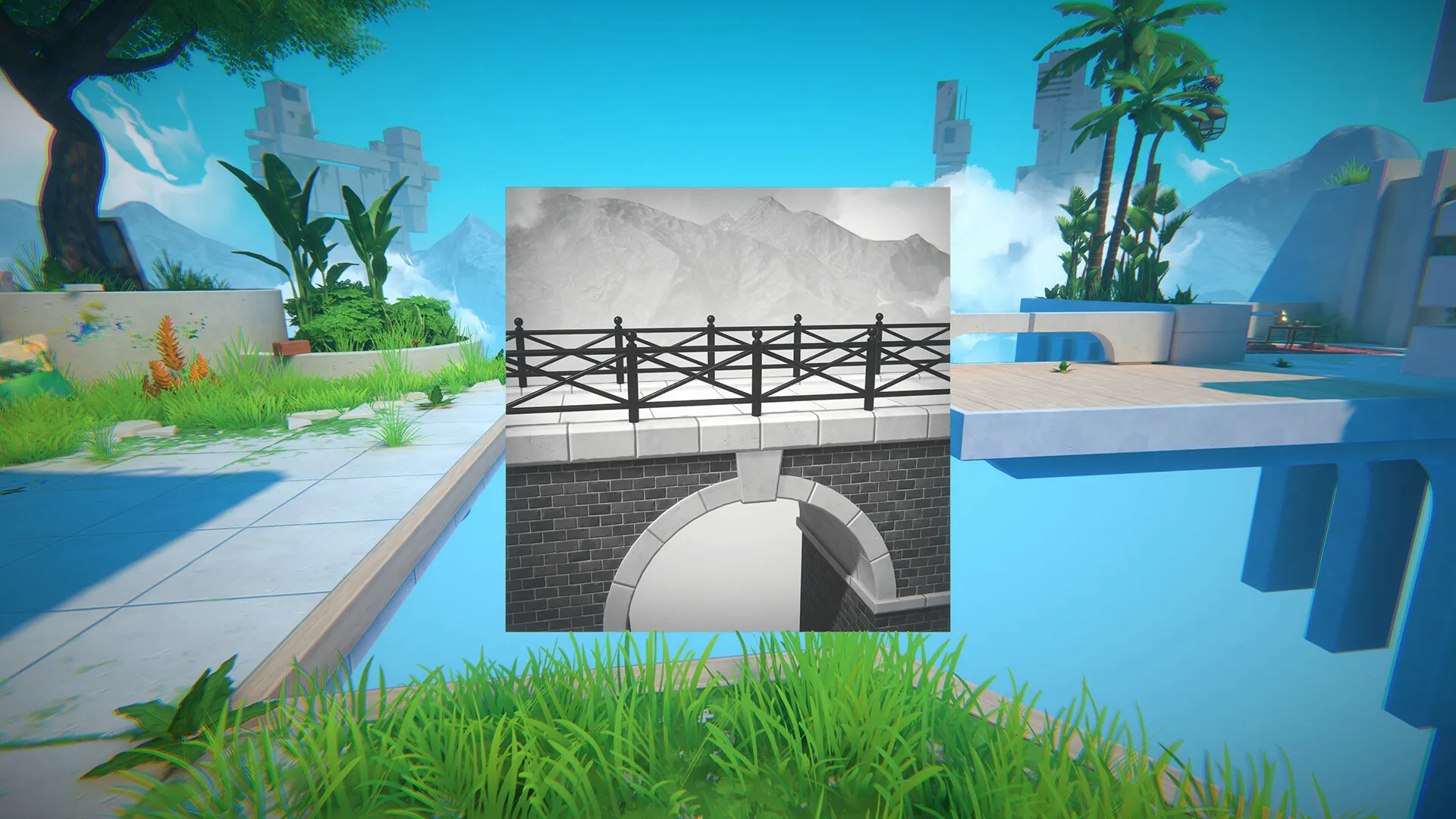For over a decade now, Parisian developers Don’t Nod have built a reputation on choice-driven games with rich narratives. Their tenth project, Banishers: Ghosts of New Eden doubles down on this focus, while serving as a (literally) spiritual successor to 2018’s Vampyr. This is a confident, expansive action game with satisfying role-playing elements and an enthralling story.
One of the most immediately striking things about Banishers is its setting. It takes place in 1695, in the deeply troubled New England island colony of New Eden. The colony is far more interesting than its boilerplate name implies. It languishes under a deadly curse, and the colonists have scattered into its rugged wilds, which prove a hunting ground for wolves, spectres, and worse.
In this version of colonial North America, the living dead are a fact of life. All manner of unfinished business can cause the departed to cling to the world in ghostly form, draining energy from the living and eventually driving them to madness. Banishers are hireling ghost-hunters, paid to unpick the reasons for hauntings, and then to end them. Securing closure can mean helping ghosts to peacefully “ascend”, forcefully banishing them to oblivion, or even killing those deemed to be guilty.
The player controls not one, but two banishers: the experienced, Cuban-born Antea Duarte and her Scottish apprentice and lover Red mac Raith. Summoned to New Eden by a colleague, they soon encounter a Nightmare – a hugely powerful, tortured ghost at the root of the colony’s spectral suffering. Very early on, Antea is killed by the Nightmare and returns as a ghost herself. Instantly, this turns the game on its head and invites a giddy rush of exciting complications to narrative and gameplay alike.

Antea’s untimely demise establishes the overarching structure of Banishers. In the aftermath, Red is left stranded far from New Eden Town. In order to recover Antea’s body and bring closure to their own haunting case, Red and Antea must fight their way back to the town and somehow excise the Nightmare. In this way, the banishers’ destiny is linked inextricably to that of New Eden itself.
Along the hard road back to the town, the player encounters various other, more minor haunting cases. These are succinct, usually optional, spectral investigations. Often wonderfully written, they deftly expose sordid details of the colonists’ lives and the backstory of New Eden. They conclude with tricky moral choices, which operate on two levels.
On the micro level, they will determine the fate of colonists in a way that alters the development of settlements and the way the banishers are perceived. On a longer timescale, the decisions the player makes will determine whether or not Antea can be returned to life. Don’t Nod never make these choices easy, and their moral twists and turns are consistently engaging – especially as they relate to a pact the characters are forced to make early on.
Optional or not, the haunting cases drive the story forwards and are thrilling little chamber plays in their own right. They touch on topics as varied as sibling rivalry, indentured servitude, infidelity, and espionage. While the mechanics of the investigations can sometimes seem a little too rigid, the cases are always rewarding and not only in narrative terms. Each one provides soul energy which enhances Antea’s ghostly powers.

Besides the investigations and narrative, the other two pillars of Banishers’ design are exploration and combat. In both of these cases, success depends on switching between Red and Antea and exploiting their respective strengths.
Banishers: Ghosts of New Eden is a surprisingly huge game which will take a bare minimum of 20 hours to finish. One of the reasons for this is the game’s large and impressively dense setting. New Eden sprawls across several regions which connect and loop back on themselves in an intensely satisfying way. The game uses a form of gear gating, in which the player’s progress through the world is anchored to Antea’s abilities.
For example, her “outburst” power is needed to smash through specific piles of stone which block particular paths. Later, Red must collaborate with her to excise tangles of ghostly weeds which snarl up bridges, doorways, and machinery. This approach to exploration keeps players returning to earlier zones to explore new possibilities, and strongly recalls the last three Tomb Raider games. Crucially, Don’t Nod consistently reward players for their persistence, memory, and determination to explore each area. Each of the 88 items of equipment have unique properties, and many require exploration to unearth.
Combat is similarly focused on a close cooperation between the two protagonists. Red’s conventional weapons make quick work of spectres, while Antea’s powers from beyond the veil are more effective against the shambling corpses they possess. Fighting is definitely not the game’s main strength, but it is more than serviceable. Don’t Nod never come close to the elegant systems of something like Evil West, but numerous builds are viable and spectral scraps can be exciting.
A few clear factors hold the combat back. Enemy variety is quite limited, and changes little over the course of what is a lengthy game. More significantly, encounter design is very rudimentary. Foes simply appear around the banishers, in haphazard and predictable ambushes. This setup rarely varies, with ranged foes at higher elevations never being more than an inconvenience. By including “endless” optional encounters, Don’t Nod seem to have greatly overestimated the appeal of their combat model.

Despite the shortcomings in certain areas, Banishers: Ghosts of New Eden adds up to an intensely compelling whole. One major reason for this is the superb presentation. Don’t Nod have crafted absolutely lovely environments using Unreal Engine 5, which demand frequent use of a good photo mode. Character models, writing, music, voice acting, sound design, and effects are all of a fantastic standard and add up to an often stunning experience. Only lacklustre lip-syncing lets the package down somewhat.
Banishers: Ghosts of New Eden remains engaging for tens of hours because it looks and feels great, and because it has a consistently satisfying gameplay loop. Exploring New Eden, and gradually chipping away at its many possibilities and side-stories, is a joy. In less capable hands, the game could quite easily have become a soulless map-clearing exercise. Instead, it feels like a place, one that is brimming with beautiful vistas, challenging quandaries, and emotive stories.
With Banishers, Don’t Nod have elevated their craft to a new level. They combine elements from numerous previous games, but always with a new spin on them. They have combined them into a gripping story of life, death, guilt, and responsibility in a novel fantasy setting. Banishers: Ghosts of New Eden is a notably accomplished action game that should not be overlooked.






well done
Interesting game. Decisions about ghosts may be pretty simple in some quests, but tougher in others. I wonder if the game feels more and more dark if player keep sacrificing people in order to get better ending for Antea. If the game tries to discourage player.
Decisions shown here seems to be too “casual”: https://youtu.be/ApeSgYjVEig